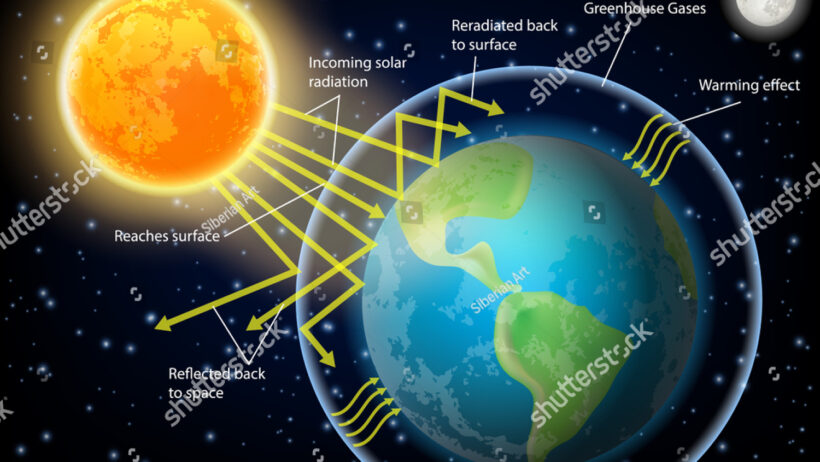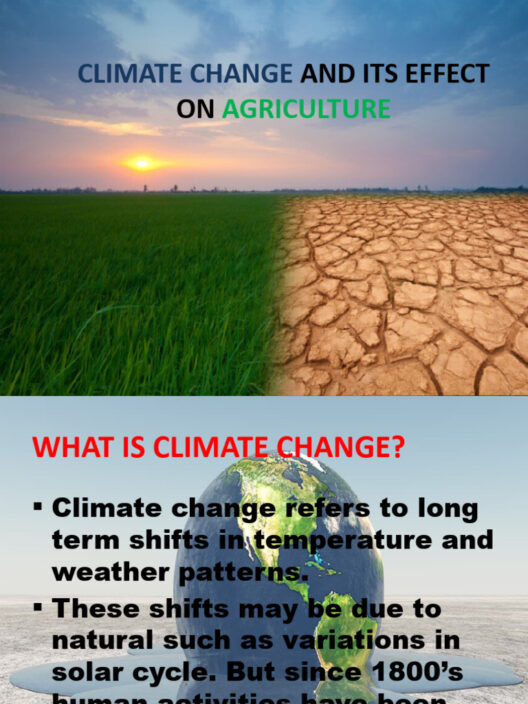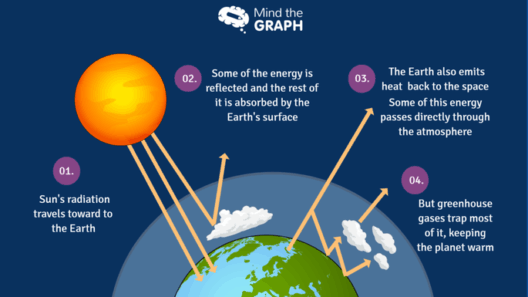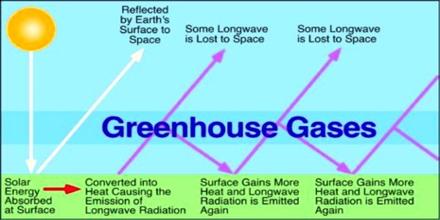The atmosphere is a complex kaleidoscope of layers, each with distinct characteristics that shape our planet’s climate and protect life as we know it. Among its most critical functions, the atmosphere regulates temperature and enables life through a delicate balance of gases. However, the burgeoning impact of the greenhouse effect threatens to disrupt this equilibrium. This article delves into the intricacies of the atmosphere, examining how each layer is affected by this phenomenon.
Understanding the structure of the atmosphere is paramount in grasping the nuances of the greenhouse effect. The atmosphere comprises five primary layers: the troposphere, stratosphere, mesosphere, thermosphere, and exosphere. Each layer plays a unique role, contributing to our planet’s climate system and environmental conditions.
As we explore these layers, we discover not only what makes our atmosphere vital for existence but also how human activities are introducing unprecedented changes.
Exploring the Troposphere: The Breath of Life
The troposphere is the lowest layer of the atmosphere, extending from the Earth’s surface to about 8 to 15 kilometers (5 to 9 miles) upward, depending on geographical location and weather conditions. This layer is where weather occurs, and clouds form, profoundly impacting local and global climates.
Within the troposphere, greenhouse gases such as carbon dioxide, methane, and nitrous oxide trap heat radiating from the Earth’s surface. This process is critical for maintaining life on our planet, as it keeps surface temperatures within a range conducive to the flourishing of ecosystems. However, the escalation of these gases due to industrial activities, agriculture, and deforestation has intensified the greenhouse effect.
Consequently, the troposphere is experiencing rising temperatures, which lead to more severe weather patterns, including prolonged heatwaves, heavy rainfall, and unpredictable storms. The perturbation in the troposphere may also result in adverse effects on human health and biodiversity, as species struggle to adapt to the rapidly changing climate.
Ascending to the Stratosphere: The Ozone Shield
Above the troposphere lies the stratosphere, stretching from about 15 kilometers to around 50 kilometers (9 to 31 miles). This layer is home to the ozone layer, which absorbs the majority of the sun’s harmful ultraviolet (UV) radiation. The significance of the ozone layer cannot be overstated; it acts as a protective shield, enabling life to thrive on Earth.
The greenhouse effect is also manifesting in the stratosphere, albeit differently. The stratosphere is experiencing a phenomenon known as stratospheric cooling, wherein the layer is losing heat due to the increasing concentrations of greenhouse gases below. While this cooling can mitigate the severity of UV radiation reaching Earth’s surface temporarily, it simultaneously disrupts atmospheric circulation patterns, influencing the jet stream and weather systems.
This altered circulation can exacerbate conditions such as drought and alter seasonal weather patterns, leading to unpredictable consequences across ecosystems. Addressing the greenhouse effect in this layer necessitates a comprehensive approach, targeting reductions in greenhouse gas emissions at their source while also advocating for international cooperation in the protection of the ozone layer.
Diving into the Mesosphere: Climate’s Silent Guardian
The mesosphere, extending from 50 kilometers to 85 kilometers (31 to 53 miles), is where the atmosphere’s temperature begins to decrease with altitude. While the mesosphere is the least studied layer, it plays an essential role in the atmosphere’s overall functionality.
Like the stratosphere, the mesosphere is indirectly affected by the greenhouse effect through changes in temperature and atmospheric dynamics. The warming of the lower layers has repercussions for wind patterns and the distribution of aerosols within the mesosphere, altering its thermal structure.
This perturbation is crucial as it can influence atmospheric gravity waves, which are vital for the exchange of energy and momentum between the upper and lower layers of the atmosphere. Any disruption in this exchange could lead to far-reaching implications for both weather and climate patterns globally, such as changes in precipitation rates and increased occurrences of devastating storms.
Reaching New Heights in the Thermosphere: The Upper Frontier
The thermosphere lies above the mesosphere, extending from about 85 kilometers to 600 kilometers (53 to 373 miles). In this layer, temperatures rise significantly due to intense solar radiation absorption. The thermosphere is also where auroras occur and plays a vital role in ionospheric processes that are crucial for radio communication.
While the thermosphere is not directly involved in the greenhouse effect, it serves as a bellwether for upper-atmospheric changes initiated by warming lower layers. Disruptions in this zone can affect satellite operations, space weather events, and the absorption of radiation, all of which are increasingly important in our technologically driven society.
Understanding the impacts of the greenhouse effect on the thermosphere supports the need for comprehensive environmental monitoring and space research to mitigate potential threats posed by shifting atmospheric conditions.
Conclusion: A Collective Responsibility
The layers of the atmosphere are intricately linked, each contributing to the delicate balance that sustains life on Earth. The greenhouse effect has initiated profound changes across these layers, resulting in an alarming array of environmental challenges. Addressing these concerns requires a concerted effort from individuals, governments, and organizations worldwide.
As stewards of this planet, we hold the power to effect change through policy, sustainable practices, and education aimed at reducing greenhouse gas emissions. Investing in renewable energy, promoting conservation, and fostering awareness are crucial steps in protecting the atmosphere and the future of our planet.








